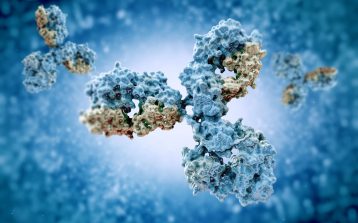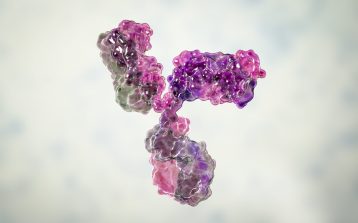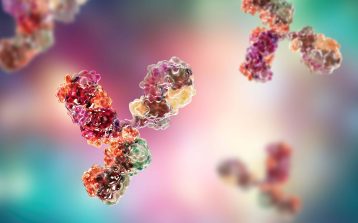During my daily descent down the YouTube rabbit hole, I stumbled upon an ad featuring a teary-eyed, trembling-voiced, menopausal woman.
What could be the cause of her upset? Could it be that she is among the 70% of menopausal women who suffer from depression and anxiety?1 Might she be weeping in exasperation because she, like 25% of women, has given up seeking medical support for her health issues?2 Or perhaps she has just discovered that if it were the 1800s, a healthcare professional might have told her that she could avoid menopause entirely – if only she weren’t “too fashionable, educated, or sexually active”?3
Don’t be absurd, this woman has true cause for distress – her “menopause weight gain almost broke her”!
Like many women, my eyes have grown weary from rolling at the caricatured portrayals of women’s health. These depictions reduce real challenges to melodrama and inconvenience, and are not just inaccurate, but harmful, perpetuating the stigma and shame that prevent many women from seeking support, and reflecting deeply ingrained negative societal attitudes.
The impassioned feminist in me would once have blamed malice. But through my experience in co-leading the development of various women’s health resources, I’ve realized that much of the stigma stems more from ignorance than ill intent.
When developing an extensive women’s health content repository a couple of years ago, the glaring gap in reliable and accessible women’s health patient resources became evident. My more recent work on menopause educational materials has deepened my concern. In this vacuum of scientifically validated, easy-to-find public education, it’s no surprise that ignorance and its buddy, stigmatization, persists in our modern society.
A partial explanation to the trundling of tumbleweed across the pages of search engines is that the information simply isn’t available. Research into women’s health remains chronically undervalued and therefore underfunded. In 2020, only 1% of healthcare research and innovation was invested in female-specific conditions beyond oncology.4 This leaves millions of women in the dark about their own bodies, forcing them to rely on fragmented information. It’s no wonder that 90% of women feel unprepared for menopause,5 or that fewer than 1 in 5 feel they have enough information about menstruation.6 And don’t get me started on endometriosis…
There has been five times more research into erectile dysfunction, which affects 19% of men, than into premenstrual syndrome (PMS), which impacts 90% of women.7
Since the widespread impact on women’s quality of life has failed to motivate research bodies to prioritize women’s health, I believe it’s time to consider mandating funding allocations. While public health agencies have the potential to lead, their track record of missed opportunities indicates that external forces – such as charities and pharmaceutical companies that advocate for women’s wellbeing – must step up to apply pressure and demand change. Pharmaceutical companies in particular must put their money where their mouth is and invest in targeted research and development to advance women’s health.
But perhaps the issue is not that spring hasn’t begun, but that the fruits of progress aren’t yet within reach. For research that has been conducted, findings are often buried under complex medical terms that bamboozle any woman without a medical degree.
True progress goes beyond scientific discovery and societal shifts – it involves democratizing knowledge and making it accessible to everyone, thus bridging the gap between research and real-world impact. Women’s health charities and public health bodies, like the NHS, bear the responsibility of translating scientific gobbledygook and disseminating resources that are both easy to read and easy to find.
HCPs also play a crucial role, but they first must be well versed in the scientific script. A 2016 study found that, of 112 internal medicine residency programs in the US, approximately 25% did not include menopause in the core curriculum, 30% did not include contraception, and more than 70% did not include infertility.8
In this context, educators and healthcare professionals can take on the role of advocates by joining or establishing professional organizations dedicated to women’s health and education reform. By pooling resources and knowledge, such groups amplify the call for change and can push for updated curricula through petitions, or meetings with curriculum boards, medical school deans, health ministries, and other key decision-makers. Collaborating with charities and research organizations experienced in policy advocacy can further bolster efforts, raising awareness and addressing the critical gaps in women’s health education.
When HCPs are thoroughly educated about menopause, they gain the confidence to discuss the topic with ease. This knowledge-driven assurance not only enhances conversations within the HCP community but also empowers them to approach the subject with patients in a more open and comfortable manner. HCPs who model this approach can create a ripple effect, encouraging women to feel more at ease and sparking more candid, informed discussions among women themselves. Whether it’s navigating menopause, menstruation, or sexual health, open dialogue serves as the kryptonite of shame.
Additionally, given that menopausal women are the fastest growing demographic in the workplace,9 companies must commit to fostering supportive environments that address their unique needs. Various initiatives, whether it be having a Menopause First Aider Team, like we have here at Scientific Group, or raising awareness on public health days, such as World Menopause Day, can encourage inclusivity, kindness, and understanding, both within and beyond the workplace.
So, let’s use this World Menopause Day, and every other day of the year, to shine a light on women’s health, and stamp out shame, stigma, and sexism. Because ladies, it’s about time we stopped living in the shadows.
References
- Menopause Support. Info. Available at: https://menopausesupport.co.uk. Last accessed Oct 2024.
- King Edward VII’s Hospital. 6 million await a diagnosis for women’s health conditions. Available at: https://www.kingedwardvii.co.uk/about-king-edward-vii/news/6-million-await-diagnosis-for-womens-health-conditions. Last accessed Oct 2024.
- Singh A et al. Bull Ind Inst Hist Med 2022;33:121–35.
- Mckinsey Health Institute. Closing the women’s health gap: A $1 trillion opportunity to improve lives and economies. Available at: https://www.mckinsey.com/mhi/our-insights/closing-the-womens-health-gap-a-1-trillion-dollar-opportunity-to-improve-lives-and-economies. Last accessed Oct 2024.
- PCHF. News. Available at: https://pcwhf.co.uk/news-article/research-reveals-92-of-women-in-the-uk-feel-unprepared-for-menopause. Last accessed Oct 2024.
- Department of Health and Social Care. Results of the ‘Women’s health: Let’s talk about it’ survey. Available at: https://www.gov.uk/government/calls-for-evidence/womens-health-strategy-call-for-evidence). Last accessed Oct 2024.
- Erectile dysfunction studies outnumber PMS research by five to one. Available at: https://www.independent.co.uk/news/science/pms-erectile-dysfunction-studies-penis-problems-period-pre-menstrual-pains-science-disparity-a7198681.html. Last accessed Oct 2024.
- Sebastian C et al. J Women’s Health 2016;26(2).
- NHS Inform. Menopause and the workplace. Available at: https://www.nhsinform.scot/healthy-living/womens-health/later-years-around-50-years-and-over/menopause-and-post-menopause-health/menopause-and-the-workplace/. Last accessed Oct 2024.





